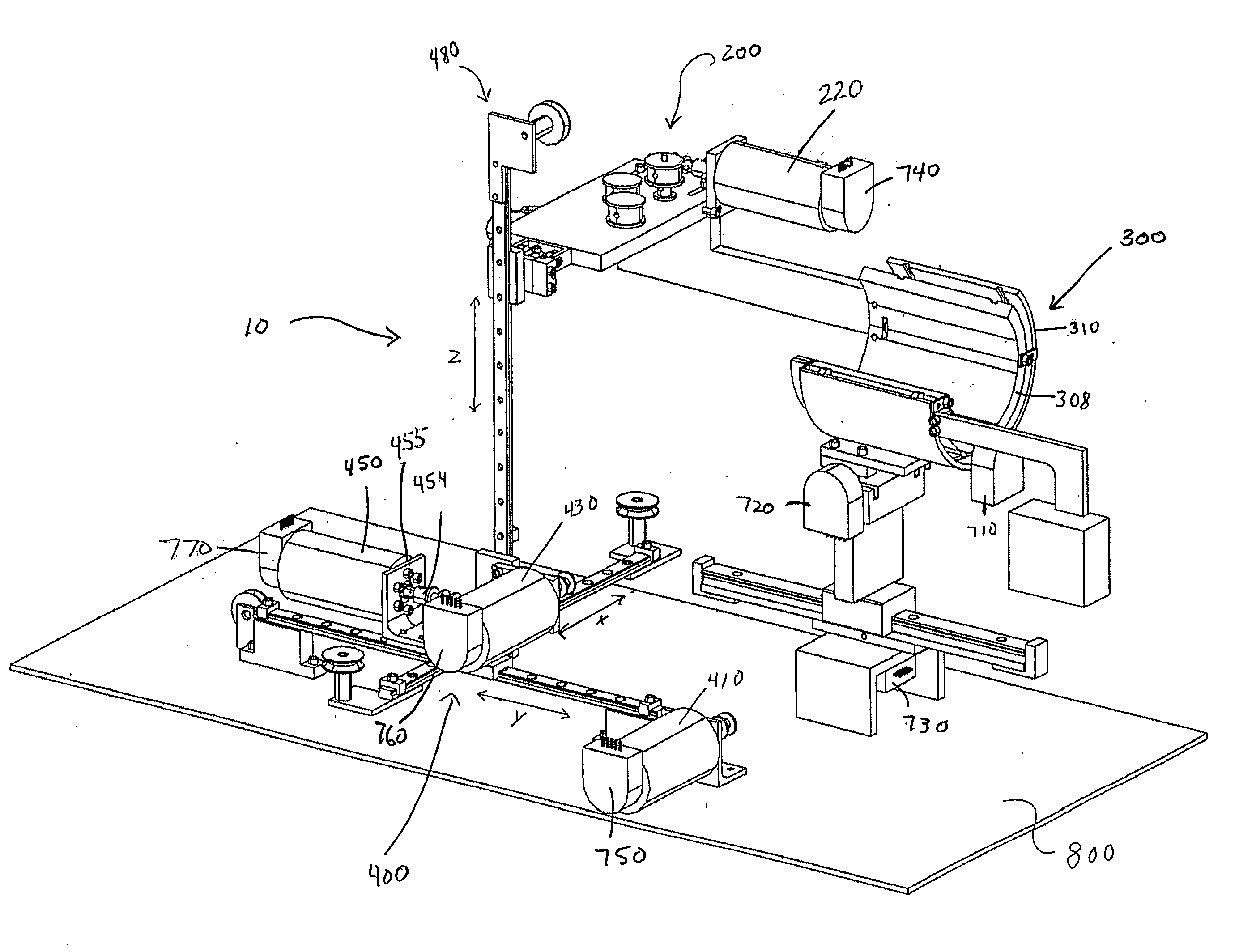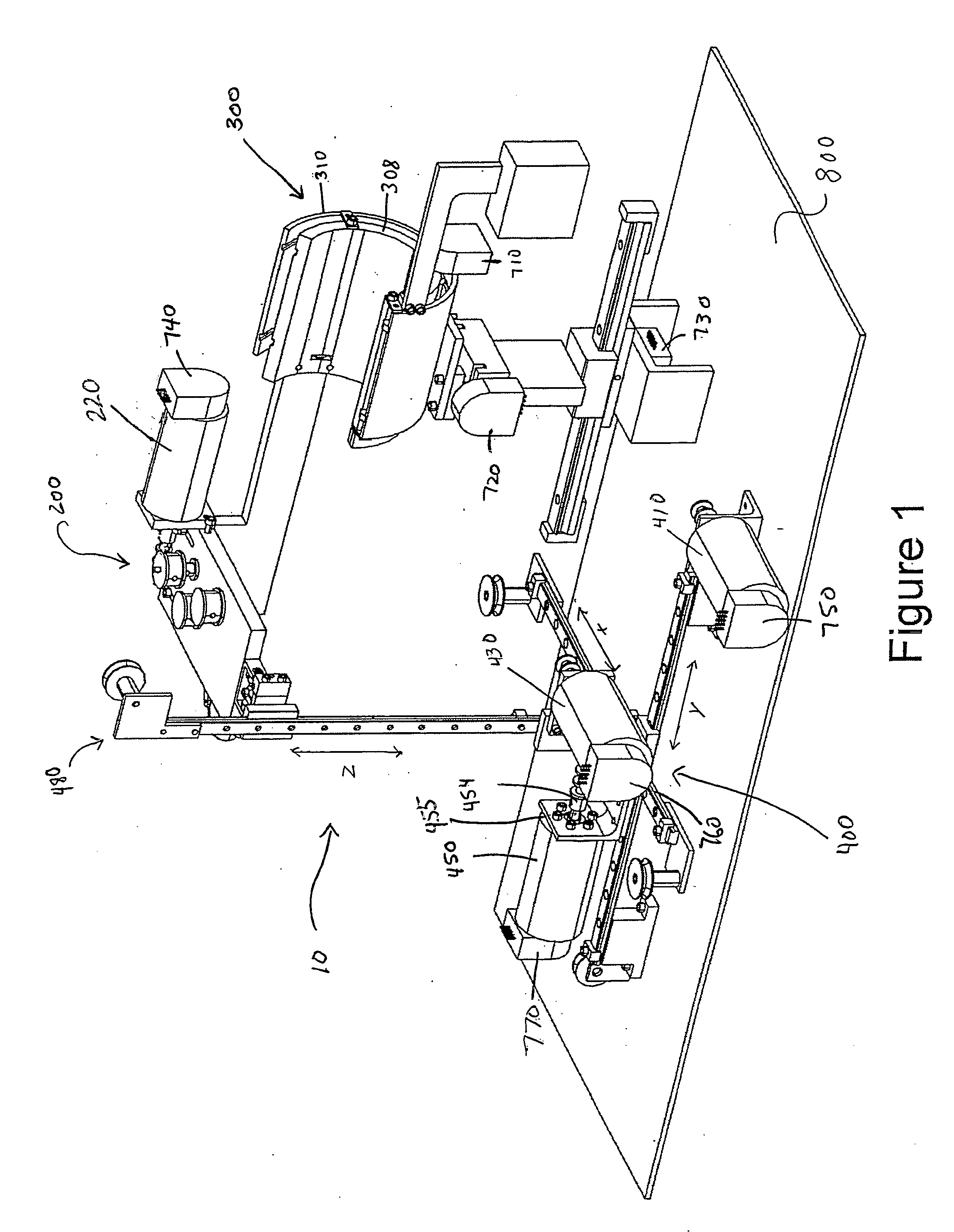Haptic interface for force reflection in manipulation tasks
- Summary
- Abstract
- Description
- Claims
- Application Information
AI Technical Summary
Benefits of technology
Problems solved by technology
Method used
Image
Examples
Embodiment Construction
[0028] Most haptic interfaces do not have an adequate range of force feedback capability for a given workspace volume. Additionally, some haptic interfaces are too bulky, particularly if higher ranges of force feedback are present within the system. Other haptic feedback systems have coupled motor torques to provide the necessary feedback at the tip. Lastly, some haptic feedback systems are ergonomically unfriendly to the user.
[0029] The present invention overcomes these disadvantages by providing four independently actuated joints for force feedback while at the same time netting three additional passive joints to provide better maneuverability. This provides for a better ergonomic design that is more user friendly. The present invention also provides for a larger force feedback capability as well as providing for a larger workspace for the given range of the force feedback capability. Additionally, the present invention has a single independent motor for each of the X, Y and Z di...
PUM
 Login to View More
Login to View More Abstract
Description
Claims
Application Information
 Login to View More
Login to View More - R&D
- Intellectual Property
- Life Sciences
- Materials
- Tech Scout
- Unparalleled Data Quality
- Higher Quality Content
- 60% Fewer Hallucinations
Browse by: Latest US Patents, China's latest patents, Technical Efficacy Thesaurus, Application Domain, Technology Topic, Popular Technical Reports.
© 2025 PatSnap. All rights reserved.Legal|Privacy policy|Modern Slavery Act Transparency Statement|Sitemap|About US| Contact US: help@patsnap.com



